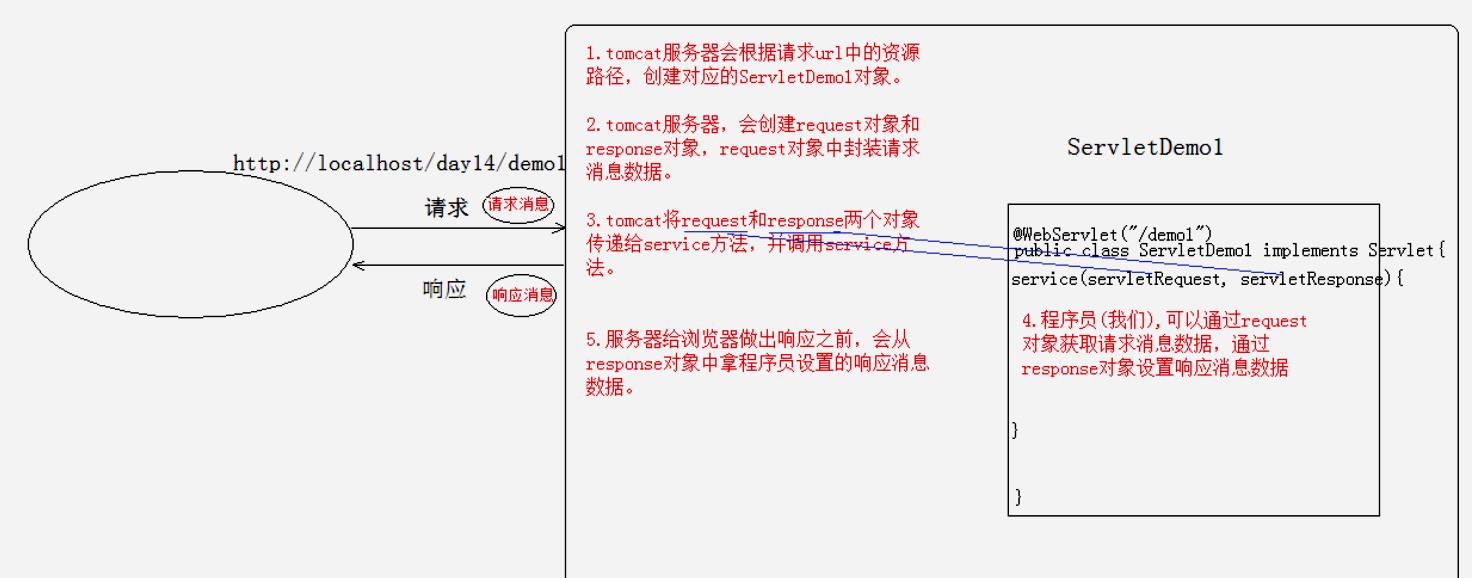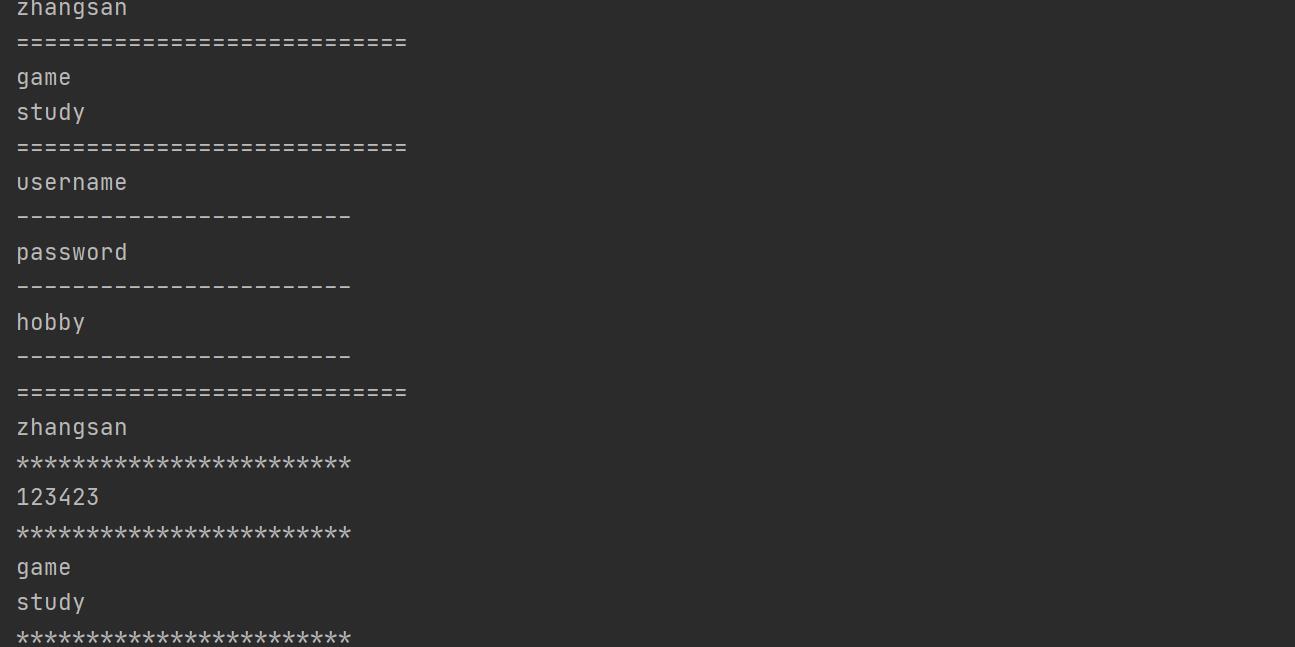JavaWeb之http协议
Posted 达少Rising
tags:
篇首语:本文由小常识网(cha138.com)小编为大家整理,主要介绍了JavaWeb之http协议相关的知识,希望对你有一定的参考价值。
文章目录
1.概念
- HTTP:Hyper Text Transfer Protocol 超文本传输协议
- 传输协议:定义了,客户端和服务器端通信时,发送数据的格式
- 特点:
- 基于TCP/IP的高级协议
- 默认端口号:80
- 基于请求/响应模型的:一次请求对应一次响应
- 无状态的:每次请求之间相互独立,不能交互数据
- 历史版本:
- 1.0:每一次请求响应都会建立新的连接
- 1.1:复用连接
2.请求消息:客户端发送给服务器端的数据

POST /login.html HTTP/1.1
Host: localhost
User-Agent: Mozilla/5.0 (Windows NT 6.1; Win64; x64; rv:60.0) Gecko/20100101 Firefox/60.0
Accept: text/html,application/xhtml+xml,application/xml;q=0.9,*/*;q=0.8
Accept-Language: zh-CN,zh;q=0.8,zh-TW;q=0.7,zh-HK;q=0.5,en-US;q=0.3,en;q=0.2
Accept-Encoding: gzip, deflate
Referer: http://localhost/login.html
Connection: keep-alive
Upgrade-Insecure-Requests: 1
username=zhangsan
(1)请求行
| 请求方式 | 请求url | 请求协议/版本 |
|---|---|---|
| GET | /login.html | HTTP/1.1 |
- 请求方式:HTTP协议有7中请求方式,常用的有2种
- GET
- 请求参数在请求行中,在url后。
- 请求的url长度有限制的
- 不太安全
- POST
- 请求参数在请求体中
- 请求的url长度没有限制的
- 相对安全
- GET
(2)请求头:客户端浏览器告诉服务器一些信息
请求头名称: 请求头值
- 常见的请求头:
- User-Agent:浏览器告诉服务器,我访问你使用的浏览器版本信息
- 可以在服务器端获取该头的信息,解决浏览器的兼容性问题
- Referer:http://localhost/login.html
- 告诉服务器,我(当前请求)从哪里来?
- 作用:
- 防盗链
- 统计工作
- User-Agent:浏览器告诉服务器,我访问你使用的浏览器版本信息
(3)请求空行
- 空行,就是用于分割POST请求的请求头,和请求体的。
(4)请求体(正文):
- 封装POST请求消息的请求参数的
3.Request
(1)request对象和response对象的原
- request和response对象是由服务器创建的。我们来使用它们
- request对象是来获取请求消息,response对象是来设置响应消息
(2)request对象继承体系结构
ServletRequest -- 接口
| 继承
HttpServletRequest -- 接口
| 实现
org.apache.catalina.connector.RequestFacade 类(tomcat)
(3)request功能
1)获取请求消息数据
- GET /day14/demo1?name=zhangsan HTTP/1.1
- 方法:
- 获取请求方式 :GET,使用
String getMethod() - 获取虚拟目录:/day14,使用
String getContextPath() - 获取Servlet路径: /demo1,使用
String getServletPath() - 获取get方式请求参数:name=zhangsan,使用
String getQueryString() - 获取请求URI:/day14/demo1,使用
String getRequestURI(): /day14/demo1StringBuffer getRequestURL(): http://localhost/day14/demo1- URL:统一资源定位符 : http://localhost/day14/demo1
- URI:统一资源标识符 : /day14/demo1
- 获取协议及版本:HTTP/1.1,使用
String getProtocol() - 获取客户机的IP地址,使用
String getRemoteAddr()
- 获取请求方式 :GET,使用
package com.request;
import javax.servlet.ServletException;
import javax.servlet.annotation.WebServlet;
import javax.servlet.http.HttpServlet;
import javax.servlet.http.HttpServletRequest;
import javax.servlet.http.HttpServletResponse;
import java.io.IOException;
/**
*
* 演示request对象方法的使用
*
*/
@WebServlet("/requestServletDemo1")
public class ServletDemo1 extends HttpServlet {
protected void doPost(HttpServletRequest request, HttpServletResponse response) throws ServletException, IOException {
}
protected void doGet(HttpServletRequest request, HttpServletResponse response) throws ServletException, IOException {
//获取请求方式 :GET,使用String getMethod()
String method = request.getMethod();
System.out.println(method);
//获取虚拟目录:/day14,使用String getContextPath()
String contextPath = request.getContextPath();
System.out.println(contextPath);
//获取Servlet路径: /demo1,使用String getServletPath()
String servletPath = request.getServletPath();
System.out.println(servletPath);
//获取get方式请求参数:name=zhangsan,使用String getQueryString()
String queryString = request.getQueryString();
System.out.println(queryString);
//获取请求URI:/day14/demo1,使用
//String getRequestURI() : /day14_war_exploded/requestServletDemo1
//StringBuffer getRequestURL() : http://localhost:8080/day14_war_exploded/requestServletDemo1
String requestURI = request.getRequestURI();
StringBuffer requestURL = request.getRequestURL();
System.out.println(requestURI);
System.out.println(requestURL);
//获取协议及版本:HTTP/1.1,使用String getProtocol()
String protocol = request.getProtocol();
System.out.println(protocol);
//获取客户机的IP地址,使用String getRemoteAddr()
String remoteAddr = request.getRemoteAddr();
System.out.println(remoteAddr);
}
}

2)获取请求头数据
- String getHeader(String name):通过请求头的名称获取请求头的值
- Enumeration getHeaderNames():获取所有的请求头名称
@WebServlet("/requestServletDemo2")
public class ServletDemo2 extends HttpServlet {
protected void doPost(HttpServletRequest request, HttpServletResponse response) throws ServletException, IOException {
}
protected void doGet(HttpServletRequest request, HttpServletResponse response) throws ServletException, IOException {
//Enumeration getHeaderNames():获取所有的请求头名称
Enumeration<String> headerNames = request.getHeaderNames();
//遍历
while (headerNames.hasMoreElements()){
String name = headerNames.nextElement();
//String getHeader(String name):通过请求头的名称获取请求头的值
String value = request.getHeader(name);
System.out.println(name + ":" + value);
}
}
}

@WebServlet("/requestServletDemo3")
public class ServletDemo3 extends HttpServlet {
protected void doPost(HttpServletRequest request, HttpServletResponse response) throws ServletException, IOException {
}
protected void doGet(HttpServletRequest request, HttpServletResponse response) throws ServletException, IOException {
//String getHeader(String name):通过请求头的名称获取请求头的值
String header = request.getHeader("user-agent");
if(header.contains("Chrome")){
System.out.println("通过谷歌浏览器访问。。。");
}else if(header.contains("Firefox")){
System.out.println("通过火狐浏览器访问。。。");
}else{
System.out.println("通过其他浏览器访问。。。");
}
}
}

3)获取请求体数据
- 请求体:只有POST请求方式,才有请求体,在请求体中封装了POST请求的请求参数
- 步骤:
- 获取流对象
BufferedReader getReader():获取字符输入流,只能操作字符数据ServletInputStream getInputStream():获取字节输入流,可以操作所有类型数据
- 再从流对象中拿数据
- 获取流对象
@WebServlet("/requestServletDemo5")
public class ServletDemo5 extends HttpServlet {
protected void doPost(HttpServletRequest request, HttpServletResponse response) throws ServletException, IOException {
//1.获取流对象
BufferedReader br = request.getReader();
String line = null;
//2.再从流对象中拿数据
while((line = br.readLine()) != null){
System.out.println(line);
}
}
protected void doGet(HttpServletRequest request, HttpServletResponse response) throws ServletException, IOException {
}
}
<!DOCTYPE html>
<html lang="en">
<head>
<meta charset="UTF-8">
<title>注册页面</title>
</head>
<body>
<form action="/day14_war_exploded/requestServletDemo5" method="post">
<input type="text" placeholder="请输入用户名" name="username"/><br/>
<input type="password" placeholder="请输入密码" name="password"/><br/>
<input type="submit" value="提交">
</form>
</body>
</html>


4)其他功能
获取请求参数通用方式
- 获取请求参数通用方式:不论get还是post请求方式都可以使用下列方法来获取请求参数
String getParameter(String name):根据参数名称获取参数值 username=zs&password=123String[] getParameterValues(String name):根据参数名称获取参数值的数组 hobby=xx&hobby=gameEnumeration<String> getParameterNames():获取所有请求的参数名称Map<String,String[]> getParameterMap():获取所有参数的map集合- 中文乱码问题:
- get方式:tomcat 8 已经将get方式乱码问题解决了
- post方式:会乱码
- 解决:在获取参数前,设置request的编码
request.setCharacterEncoding("utf-8");
- 解决:在获取参数前,设置request的编码
@WebServlet("/requestServletDemo6")
public class ServletDemo6 extends HttpServlet {
protected void doPost(HttpServletRequest request, HttpServletResponse response) throws ServletException, IOException {
//1.String getParameter(String name):根据参数名称获取参数值 username=zs&password=123
String username = request.getParameter("username");
System.out.println(username);
System.out.println("============================");
//2.String[] getParameterValues(String name):根据参数名称获取参数值的数组 hobby=xx&hobby=game
String[] hobbies = request.getParameterValues("hobby");
for (String hobby : hobbies){
System.out.println(hobby);
}
System.out.println("============================");
//3.Enumeration<String> getParameterNames():获取所有请求的参数名称
Enumeration<String> parameterNames = request.getParameterNames();
while(parameterNames.hasMoreElements()){
String name = parameterNames.nextElement();
System.out.println(name);
System.out.println("------------------------");
}
System.out.println("============================");
//4.Map<String,String[]> getParameterMap():获取所有参数的map集合
Map<String, String[]> parameterMap = request.getParameterMap();
Set<String> keySet = parameterMap.keySet();
for(String key : keySet){
String[] values = parameterMap.get(key);
for (String value : values){
System.out.println(value);
}
System.out.println("************************");
}
}
protected void doGet(HttpServletRequest request, HttpServletResponse response) throws ServletException, IOException {
//通常在开发过程只实现doPost()或doGet(),因为两个方法基本一样
this.doPost(request, response);
}
}
<!DOCTYPE html>
<html lang="en">
<head>
<meta charset="UTF-8">
<title>注册页面</title>
</head>
<body>
<form action="/day14_war_exploded/requestServletDemo6" method="post">
<input type="text" placeholder="请输入用户名" name="username"/><br/>
<input type="password" placeholder="请输入密码" name="password"/><br/>
<input type="checkbox" name="hobby" value="game">游戏
<input type="checkbox" name="hobby" value="study">学习<br/>
<input type="submit" value="注册">
</form>
</body>
</html>


中文乱码问题解决方式:
package com.request;
import javax.servlet.ServletException;
import javax.servlet.annotation.WebServlet;
import javax.servlet.http.HttpServlet;
import javax.servlet.http.HttpServletRequest;
import javax.servlet.http.HttpServletResponse;
import java.io.IOException;
import java.util.Enumeration;
import java.util.Map;
import java.util.Set;
/**
* @author 达少
* @version 1.0
*/
@WebServlet("/requestServletDemo7")
public class ServletDemo7 extends HttpServlet {
protected void doPost(HttpServletRequest request, HttpServletResponse response) throws ServletException, IOException {
//解决中文乱码,需要设置流的字符编码
request.setCharacterEncoding("utf-8");//这个编码要和页面的编码保持一致
//1.String getParameter(String name):根据参数名称获取参数值 username=zs&password=123
String username = request.getParameter("username");
System.out.println(username);
}
protected void doGet(HttpServletRequest request, HttpServletResponse response) throws ServletException, IOException {
//通常在开发过程只实现doPost()或doGet(),因为两个方法基本一样
this.doPost(request, response);
}
}



请求转发
- 请求转发:一种在服务器内部的资源跳转方式
- 步骤:
- 通过request对象获取请求转发器对象:
RequestDispatcher getRequestDispatcher(String path) - 使用RequestDispatcher对象来进行转发:
forward(ServletRequest request, ServletResponse response)
- 通过request对象获取请求转发器对象:
- 特点:
- 浏览器地址栏路径不发生变化
- 只能转发到当前服务器内部资源中。
- 转发是一次请求
@WebServlet("/requestServletDemo8")
public class S以上是关于JavaWeb之http协议的主要内容,如果未能解决你的问题,请参考以下文章